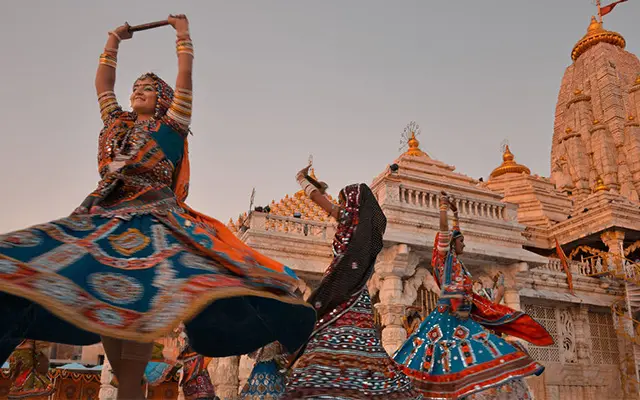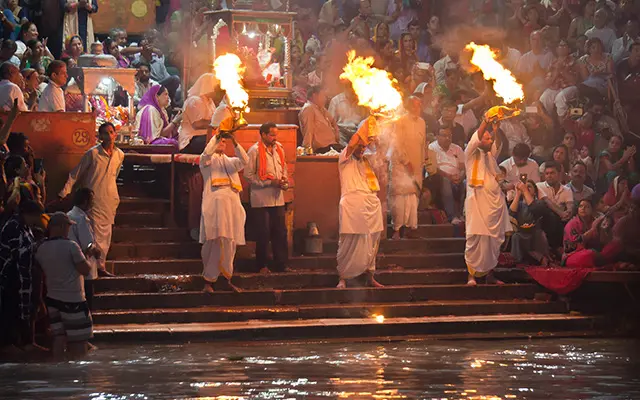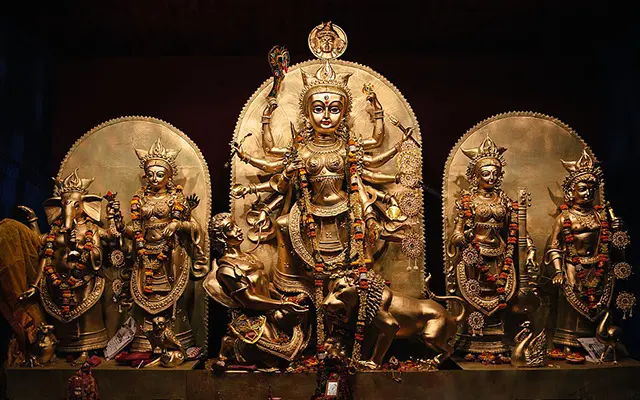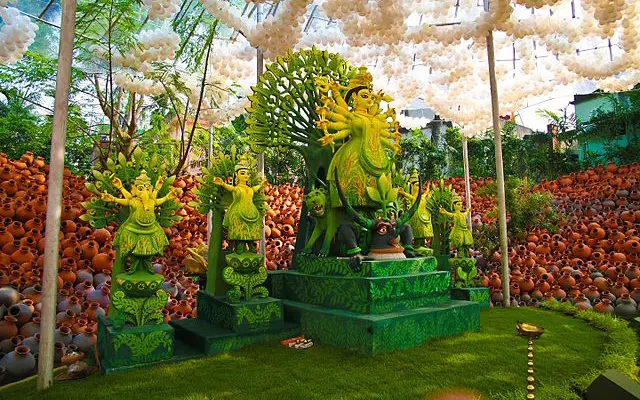Rituals & customs of Navratri
Explore the symbolization of Navratri rituals and discover the deeper meaning of this highly anticipated festival of India.
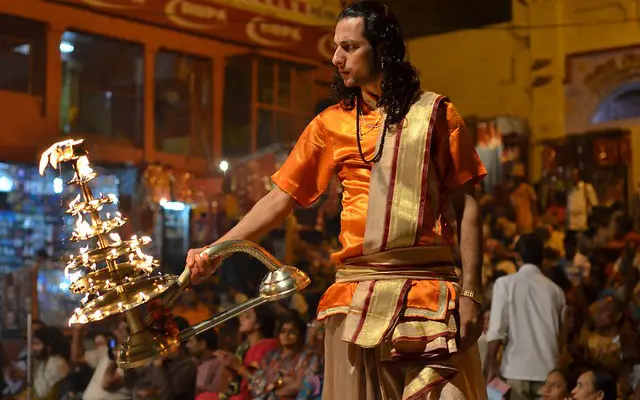
Common practices and rituals of Narvatri
The followed practices include religious, spiritual and festivity aspects. They are related to traditional beliefs and old habits that evolved during the centuries and construct the colorful spectrum of Navratri festival.
Praying (Mantras)
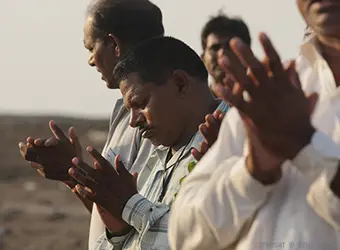
According to religious texts, it is highly recommended to chant mantras during the Navratri period. It is one of the best ways to make the occasion sacred and joyful as well as to show devotion to Goddess Durga.
It is believed that mantras bring luck and happiness, while the proper way of chanting them is crucial in order to have a positive result. More specifically, the mantra chanting should be done in a clean environment and the faithful should try to have the correct pronunciation. Mantras are also chanted in groups where an eligible brahmin on behalf of a larger group of faithful.
Among others, the Gayatri Mantra is very famous. This is a highly revered mantra dedicated to Savitr the sun deity. Usually, it is repeated three times per day (morning, afternoon, evening) by worshipers who wear clean clothes and seat quietly showing dedication to the Goddess.
Ritual of the light (Aarti)
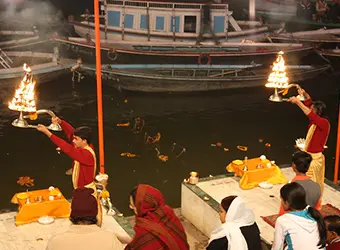
This is a religious worshiping ritual in which light (usually in a form of flame) is offered in front of the idol (or a picture) of Goddess Durga. Aarti derives from the Sanskrit word Arartika that means something that removes darkness.
Aarti is usually a ritual that follows after the end of ritual prayers (pujas) or song and music sessions (bhajans) devoted to the Goddess. Sometimes it is very simple and is executed by one person. In other cases, it has a more elaborate form and is performed in front of large crowds.
The Aarti that is performed during Navratri festival is an expression of love, gratitude, and devotion of the faithful towards Durga. The flame (or light) placed on a metal plate symbolizes the power of the deity, while the circulating movement around the idol (or picture) is also accompanied by songs that praise the Goddess.
Meditating
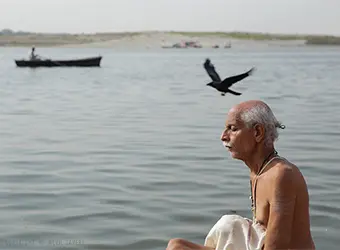
Keeping the mind focused on spiritual activities and invest time to longer meditation sessions is very important during Navratri. The nine days of the festival are broken into sets of three and during each set, a specific aspect of the Goddess is meditated upon.
According to Hinduistic beliefs, meditation offers relaxation and rejuvenates people's minds and bodies. The faithful have the opportunity to experience silence and calm their spirit from by ejecting bad thoughts and concentrate on the glorious power of the divine.
One of the main targets of meditating is to achieve a personal balance by aligning mind and body powers with nature. Given that Navratri is celebrated at the Autumn Equinox when the night and the day are divided equally, it is believed that this "balanced period" is ideal for meditation.
Clothing
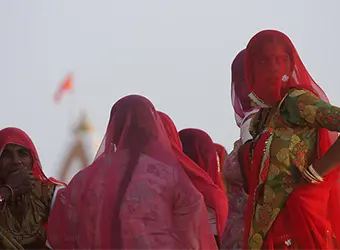
During Navratri, people avoid wearing black clothes or keeping leather goods and materials with them. A basic principle is to wear clean garments as an implication of the "pure" status of mind and heart as well as showing respect to the holy feast of Goddess Durga.
Navratri is undoubtedly one of the most colorful festivals due to the fact that many chose to wear different colors on each day in order to honor Durgas nine forms.
Each of the nine days of the celebration is dedicated to a different avatar of Goddess Durga and given that each avatar is related to a specific color, this color dominates the festive environment. Based on that fact, it is very common for many areas of India to meet the vast majority of women dressed in the same "color of the day".
Fasting
Even if fasting is not compulsory many people try to keep their body clean and restrained, thus some are sustaining only on fruits and milk while other, eat only one vegetarian meal per day that does not contain onion or garlic.
Physical appearance
Abstaining from shaving, hair cutting, and nail trimming is also something quite common. The celebration focuses also at the purity of the body so the participants start their day with a shower and try to remain clean during the day as well.
Family
People tend to visit their homes, gather with their families and celebrate together. Navratri is a festival where God is adored as a mother and motherhood is a central implication. Many are used to stay awake all night and participate in ‘bhajans’ (musical performances) with family members.
Nature
In order to celebrate the good harvest, women plant nine different kinds of food grains and offer the young saplings to the Goddess. A garland of fresh flowers is also tied and offered every day to the idol of goddess Durga.
Offering to females
Since young girls are considered a form of Goddess Durga, people worship them and offer sweets and other types of traditional food items. They also invite married women and treat them with auspicious betel nuts and coconut.
Overnight celebration
People stay awake during the nights of the nine-day festival and celebrate by taking part on traditional dancing events dancing Dandiya Raas and Garba (traditional folk dances from Gujarat and Rajastan).
Akhand Jyot
This is an oil lamp that usually burns constantly in front of the idol or the picture of Goddess Durga for the entire nine days period of Navratri. While burning, the Akhand Jyot should be orientated towards South West.
Charity
Charity is also a significant aspect of Navratri. It is a gesture that appeases the Goddess and helps towards the fulfillment of spiritual needs. Thus, doing charity and donating food to those who need it is something highly recommended.

Physical, mental and spiritual practices
During Sharada Navratri people follow a series of rituals. While through physical, mental and spiritual practices embrace the deeper essence of worshiping Goddess Durga. The honoring practices might differ between various areas of India and the visitor of each region has the opportunity to experience a vast variety of public events.
Hinduism is an identity element of the Indian population and observing a festival like Navratri is a unique opportunity to dive into the fundamentals of Indian culture. A closer look into the followed customs and rituals reveal the cultural and historical background of each area.
The essence of Hinduism is that the path may be different, but the goal is the same.
Although Navratri celebrations involve some strict rules, everyday people and visitors choose to attend the rituals that fit them. Those rituals are characterized by natural flexibility and as a result, the sense of enjoyment and satisfaction is dominating the festival areas and the participants as well.
